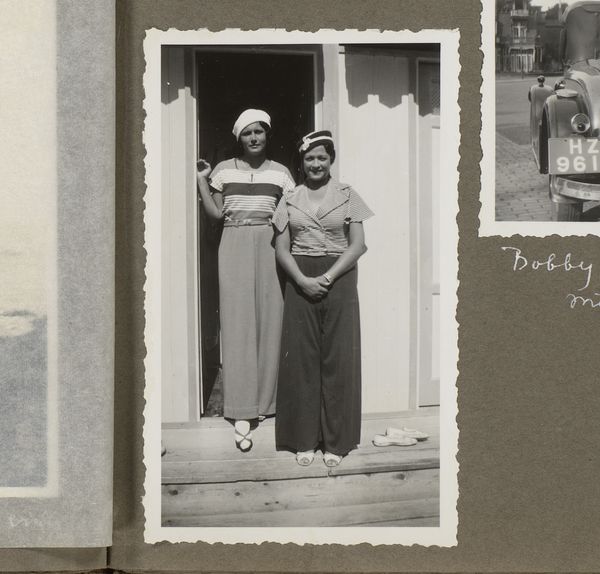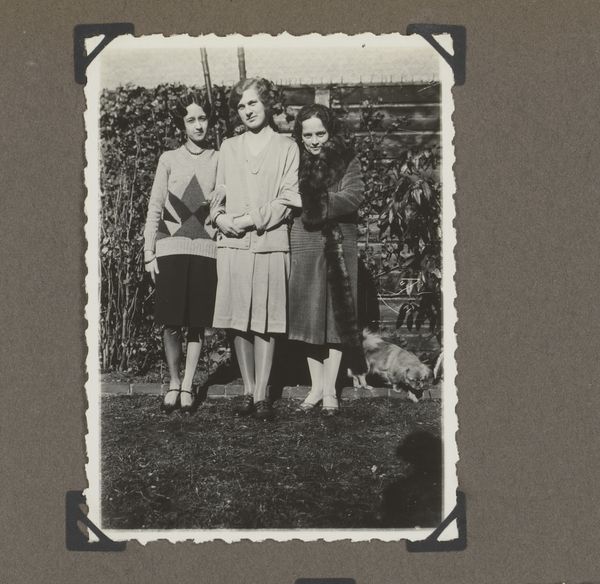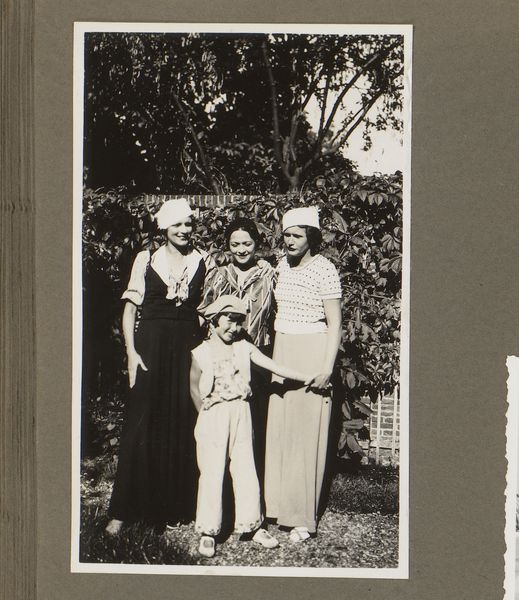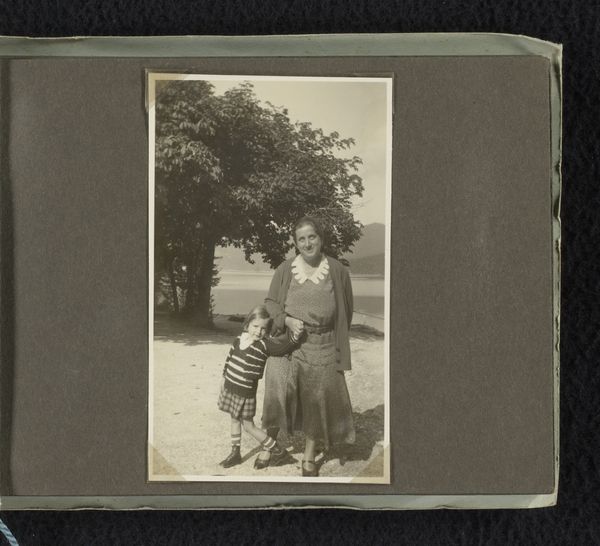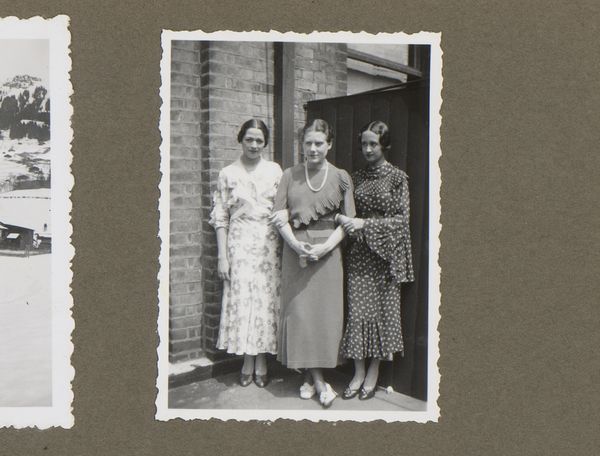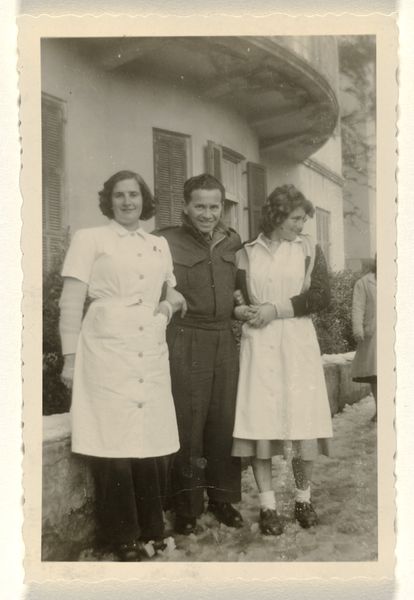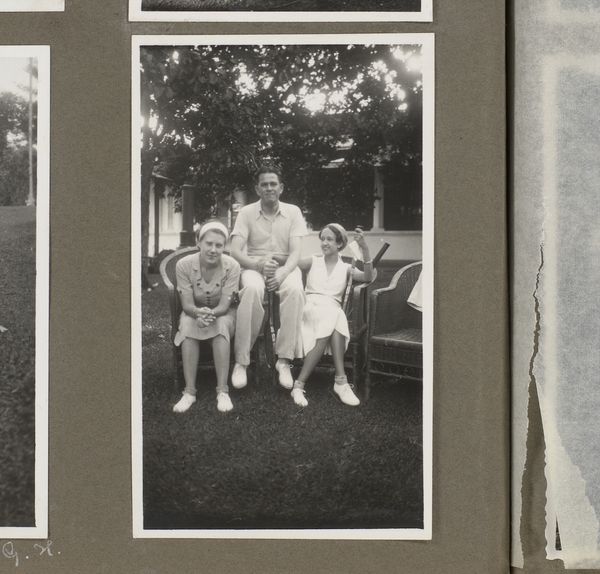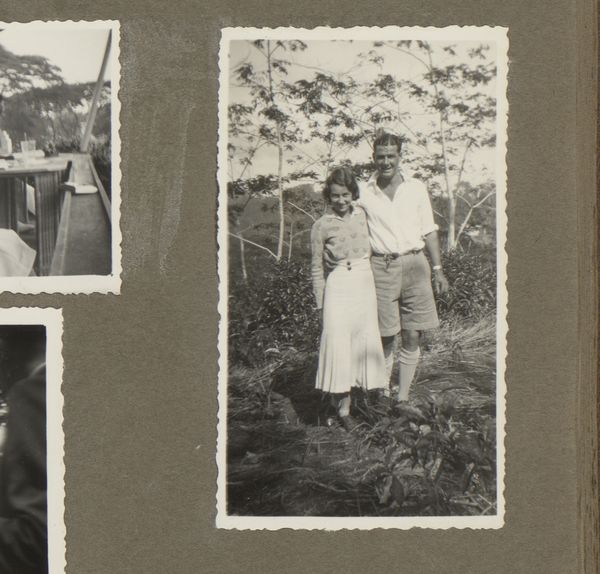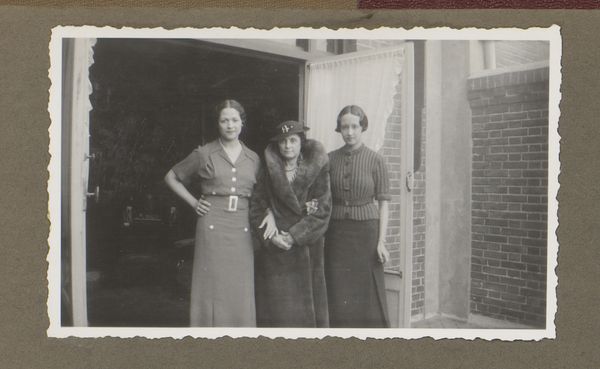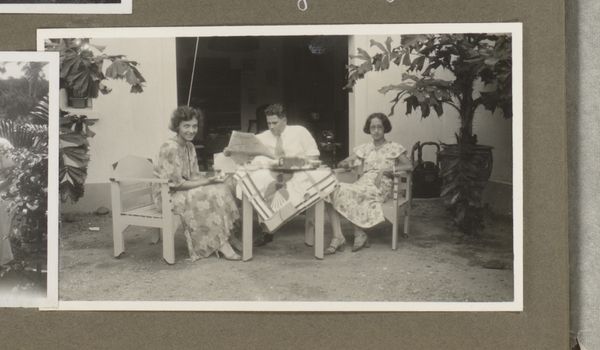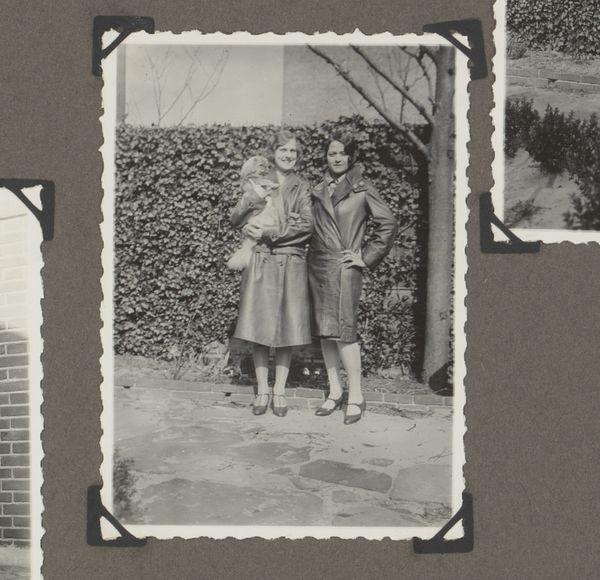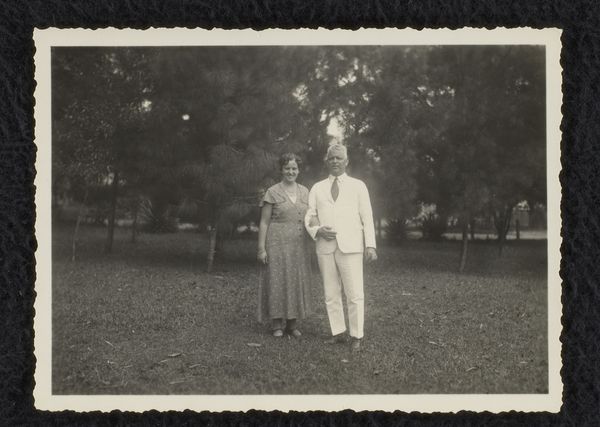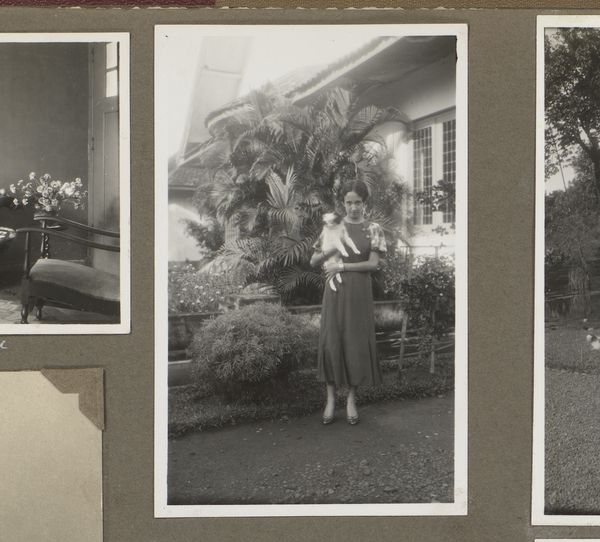
photography
#
portrait
#
still-life-photography
#
archive photography
#
photography
#
group-portraits
#
realism
Dimensions: height 59 mm, width 89 mm
Copyright: Rijks Museum: Open Domain
Curator: This is a photograph titled "Groepsportret in een tuin, Batavia", which translates to "Group Portrait in a Garden, Batavia". It was taken in 1932. What is your first impression? Editor: The first thing that strikes me is the setting. The family is clearly posing in a constructed world – nature as stage. It's so carefully posed, so intentionally...composed. Curator: Indeed. The image's strength resides in how it communicates colonial and class aspirations. Batavia, now Jakarta, then representing the heart of the Dutch East Indies. To me, this photo symbolizes cultural adaptation and power dynamics. It evokes an attempt to reconcile European ideals with a tropical environment, to domesticate both. Editor: And you can really read that intention in the image making, and how photography as a technology served that very quickly: paper prints made with specific chemicals, cameras shipped over and processed, the labor of local staff. It creates distance and an altered, constructed intimacy, from what likely occurred. Look how stiff they are. Curator: Stiff, yes, but perhaps more accurately, self-conscious. This medium freezes them in a specific performative mode for posterity, suggesting that the photograph operates as a symbol, designed to endure time itself. Note the garden; it signifies prosperity and civilization, echoing similar portraits made in Europe, just re-contextualized within a colonial setting. Editor: Exactly! The staged, slightly awkward composition adds a certain gravity that is hard to look away from, but its very materiality betrays their vulnerability: silver gelatin paper aging, fading under sunlight...these photos survive, with no certain record, from a bygone history of social inequity and constructed identities. Curator: That aging further embeds these personal histories in our cultural memory, where the photograph turns into an artifact imbued with shared past experiences. So we are viewing this photograph on different registers – individual identity and historical forces meeting! Editor: That's well put. These visual traces carry heavy implications. I wonder how these seemingly ordinary people understood the technology, materials and social position they occupied and perpetuated. Curator: A fruitful way to look at an intriguing work – bridging photographic creation and what is being immortalized is such a meaningful avenue. Thank you for joining me to make our time more engaging!
Comments
No comments
Be the first to comment and join the conversation on the ultimate creative platform.
